 Technology
Technology  Technology
Technology  Humans
Humans 10 Everyday Human Behaviors That Are Actually Survival Instincts
 Animals
Animals 10 Animals That Humiliated and Harmed Historical Leaders
 History
History 10 Most Influential Protests in Modern History
 Creepy
Creepy 10 More Representations of Death from Myth, Legend, and Folktale
 Technology
Technology 10 Scientific Breakthroughs of 2025 That’ll Change Everything
 Our World
Our World 10 Ways Icelandic Culture Makes Other Countries Look Boring
 Misconceptions
Misconceptions 10 Common Misconceptions About the Victorian Era
 Mysteries
Mysteries 10 Strange Unexplained Mysteries of 2025
 Miscellaneous
Miscellaneous 10 of History’s Most Bell-Ringing Finishing Moves
 Technology
Technology Top 10 Everyday Tech Buzzwords That Hide a Darker Past
 Humans
Humans 10 Everyday Human Behaviors That Are Actually Survival Instincts
 Animals
Animals 10 Animals That Humiliated and Harmed Historical Leaders
Who's Behind Listverse?

Jamie Frater
Head Editor
Jamie founded Listverse due to an insatiable desire to share fascinating, obscure, and bizarre facts. He has been a guest speaker on numerous national radio and television stations and is a five time published author.
More About Us History
History 10 Most Influential Protests in Modern History
 Creepy
Creepy 10 More Representations of Death from Myth, Legend, and Folktale
 Technology
Technology 10 Scientific Breakthroughs of 2025 That’ll Change Everything
 Our World
Our World 10 Ways Icelandic Culture Makes Other Countries Look Boring
 Misconceptions
Misconceptions 10 Common Misconceptions About the Victorian Era
 Mysteries
Mysteries 10 Strange Unexplained Mysteries of 2025
 Miscellaneous
Miscellaneous 10 of History’s Most Bell-Ringing Finishing Moves
10 Unique Easter Traditions Around The World
Easter is here once again. Around the world, it is a time when we consume copious quantities of chocolate brought to us by small, furry mammals. It is traditionally the time for Easter egg hunts, bonnet parades, and chocolate bunnies.
The origins of Easter celebrations date back to pagan times, when the long, cold European winters finally ended. Many ancient festivals were held around the equinoxes and solstices. Spring was the time when the days suddenly became warmer, the snow melted, and flowers began to bloom, sparking celebrations to mark this time of regrowth and renewal.
Easter is also a time of great religious significance for many worshipers around the world, who gather to celebrate Christ’s death and resurrection. Over the years, the pagan and Christian celebrations became intertwined with the common theme of birth and renewal.
Many Easter traditions are common around the world, such as Easter egg hunts, Easter bonnet parades, and gatherings of family and friends who feast to celebrate the end of Lent. However, there are some amazing traditions that continue today that you have probably never heard of. Even our most common modern-day Easter activities have some interesting beginnings.
10 Easter Eggs
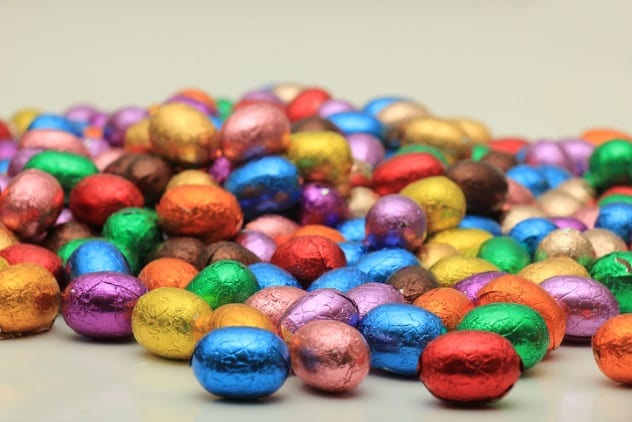
On Easter Sunday, millions of chocolate eggs will be consumed across the globe. Supermarket shelves are lined with Easter eggs in all shapes, sizes, and varieties. However, these commercial chocolate eggs have only been popular for a relatively short time. In many church traditions, eggs couldn’t be eaten during the week before Easter. As far back as the Middle Ages, eggs were collected and decorated to be eaten after Lenten fasting on Easter Sunday.
During the 19th century, elaborate egg-shaped fabric bags and parcels were made to give gifts of candy and chocolate. Egg-shaped toys were developed to contain gifts for children. During this time, French and German confectioners began crafting egg-shaped chocolates. They were initially solid, made from bitter dark chocolate.[1] It took some time before chocolatiers perfected the art of molding their confectioneries into the hollow eggs which are common today.
9 Easter Bunny
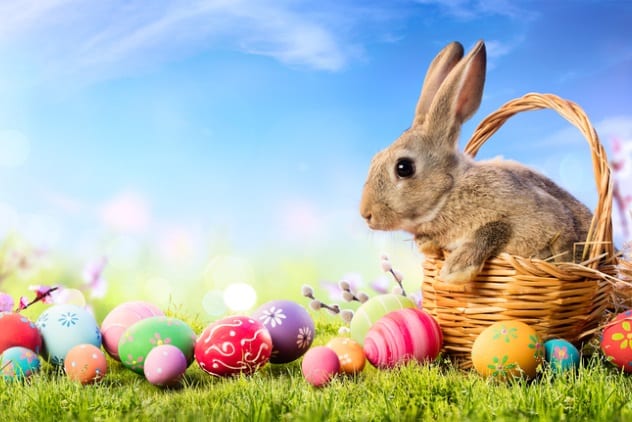
Around the world, Easter bunnies have begun appearing. Children will wake up on Easter Sunday to excitedly discover what chocolate treats the bunny has brought them. This mysterious rabbit is credited with bringing Easter eggs to children in many Western cultures, but the exact origins of the Easter bunny are unclear.
Hares were often included in traditional fertility festivals which occurred across Europe to celebrate spring. They can also be seen in many medieval artworks and religious texts. Leporids are particularly prolific breeders, so they’re a great symbol of fertility and rebirth. It’s therefore not surprising that they were a central theme in many spring festivals.[2]
Hares delivering colored eggs were originally part of German folklore dating back to the 17th century, when a German essayist mentioned the concept of hares bringing Easter eggs. German immigrants brought their traditional Easter Hare with them. This eventually evolved into the modern-day “Easter Bunny,” which served as a popular marketing tool for commercial chocolate Easter eggs during the 19th century.
8 Easter Bonnets
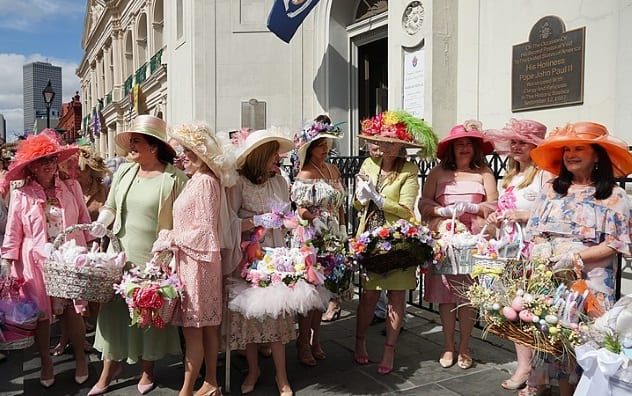
During Easter week, schools and preschools around the world will be hosting the annual Easter hat parade. Children don their cleverly crafted hats adorned with Easter bunnies, eggs, streamers, and flowers. Fashionable women will line up for Easter hat parades wearing their latest millinery designs.
The origins of Easter bonnets stem from the tradition of making a new hat to wear to church on Easter Sunday. Women would celebrate spring, decorating their hats with flowers, lace, and ribbons as a symbol of rebirth and renewal.
However, the concept of the Easter bonnet wasn’t cemented into people’s minds until 1933, with songwriter Irving Berlin’s lyrics to “Easter Parade.” The popular song about women parading along Fifth Avenue in their Easter bonnets featured in musicals and films, and today, the tradition of decorating an Easter hat is a great, fun activity in the lead-up to Easter.[3]
7 Easter Bells In France
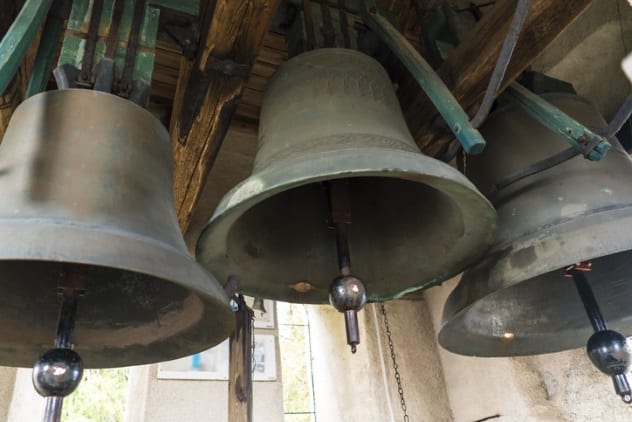
The Easter bunny doesn’t visit France. Children in France receive their Easter goodies from the “Easter Bells.” The tradition is based on staunch Catholic teachings, where no church bells are to ring between Holy Thursday and Easter Sunday.
Children are told that the bells fly to Rome to be blessed by the pope, and they return on Easter Sunday bringing eggs and other treats. Chocolate treats are enjoyed just like in many other countries in the world, as are traditional Easter egg hunts. However, it is the Easter Bells, not the Easter Bunny, which are responsible for littering the gardens with eggs.[4]
6 Easter Cuckoo In Switzerland

Swiss Easter traditions seem to be a little more plausible than a rabbit laying chocolate eggs. The Easter Cuckoo is responsible for laying the eggs that children collect on Easter morning. A bird laying an egg just sounds a little more believable.
In Swiss tradition, cuckoo eggs are not only a symbol of spring, but the cuckoo has long been thought to bring good luck. Regions closer to the French border maintain the French tradition of “Easter Bells” dropping off the eggs on their way back from being blessed in Rome. In Switzerland, Easter is also the time to give gifts of bread, wine, and cheese to your neighbors.[5]
5 Easter In Germany
While the origins of the Easter Hare can be traced back to German folklore, in some parts of Germany, it is the Easter Fox who brings the eggs.
As referenced previously, the Osterhase, or “Easter Hare,” was first mentioned in an essay in 1682 by Georg Franck von Franckenau. He told of the hare hiding eggs for children to find in the garden. German immigrants no doubt brought this tradition to the US, to become the Easter Bunny we know today.
Also as mentioned above, intricately decorated eggs were traditionally colored prior to Easter but have been replaced with modern chocolate eggs. In Germany, rather than spreading Easter eggs around the garden, trees are traditionally hung with decorative eggs in a manner reminiscent of Christmas trees, which, incidentally, also originated in Germany.[6]
Bonfires play a huge part in German Easter celebrations. The huge bonfires mark the end of the long, cold winters. People in Lugde build an Osterraderlauf—a large wheel which is set on fire and rolled down a hill.
4 Scandinavian Witches
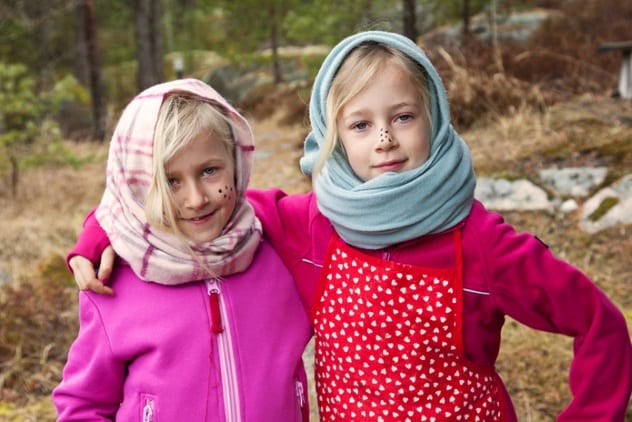
In Scandinavian countries, Easter is the time when the dark days of winter finally lift, and people can venture out into the sunshine once again. Their celebrations are more secular, less about religious significance and more about gathering family and friends around.
According to Swedish folklore, on Easter Thursday, witches fly off to a mountain to meet the Devil. Children in Sweden, Finland, and parts of Norway traditionally dress up as witches in headscarves with painted faces, going door to door around the neighborhood begging sweet treats from the neighbors.[7]
Meanwhile, in Denmark, family members will cut delicate paper “snowflakes” containing letters for each other. A game will then be played where you have to guess the writer of your letter. Like their German neighbors, bonfires to celebrate the end of winter are a huge part of Scandinavian Easter celebrations.
3 Czech Switches
After decades of communist rule, most religious celebration was suppressed in the Czech Republic, and most of their traditions date back to their ancient culture. A more unusual Easter tradition is also based on a celebration of spring and fertility.
Czech boys will make “osier sticks” out of willow branches decorated with ribbons to “whip” young girls with for good luck and fertility. The new pussy willow twigs are said to bring health and vitality to anyone touched by them.[8] The osier sticks are meant to tap, not hurt, and are all part of the Easter fun. Originally, they were cleverly plaited and decorated, but today, they can be found on most supermarket shelves alongside the chocolate Easter eggs.
Meanwhile, the girls will be crafting intricately decorated painted eggs to give to boys on Easter Monday. Beeswax, straw, and even onion peel were traditionally used to color the eggs.
2 Easter In Hungary
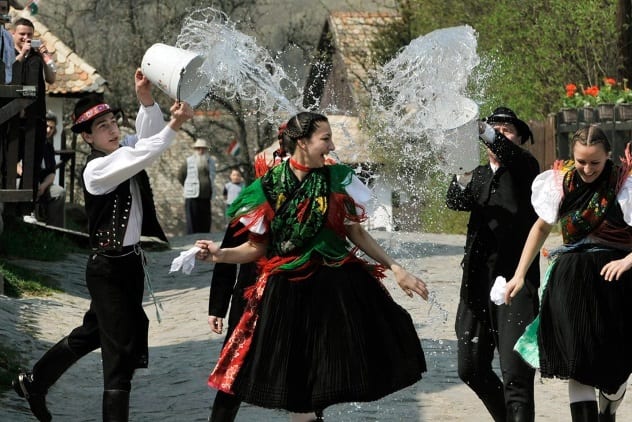
Hungarian Easter traditions are based upon the common theme of rebirth and a celebration of spring. Hand-decorated eggs have given way to the commercial chocolate eggs, which the Easter Bunny will leave for children on Easter Sunday.
However, traditionally, Easter was also a time of symbolic cleansing and, of course, fertility, though it’s hard to imagine how having a bucket of cold water thrown over you could be considered a romantic gesture. On Easter Monday, young men would visit young women to recite a poem to them. Then, somewhat killing the romance of the occasion, they would douse the young women with a bucket of water to ensure that they became good wives and mothers.[9]
To give thanks for their somewhat wet “blessing,” women would then feed the men chocolate treats and a glass of Hungarian palinka. Sprinkling people with perfume has become the preferred means of honoring this tradition today.
1 Australian Easter Bilby
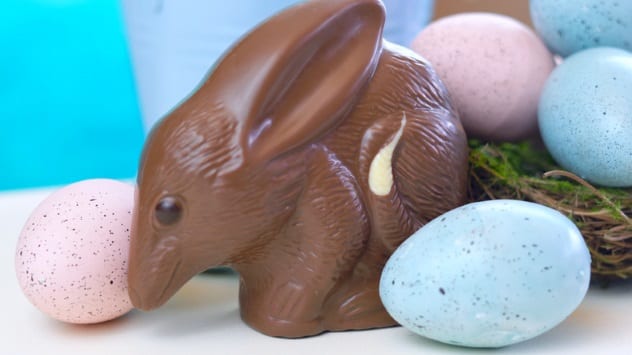
I was surprised to find that many “Easter culture” lists will mention the Australian “Easter Bilby.” After all, the Easter Bunny is very much alive and well in Australia. He has been seen making appearances at hat parades and Easter parties across the country and is expected to arrive as usual on Easter Sunday. The Easter Bilby, however, is not a generally acknowledged Easter tradition in Australia but rather a marketing strategy developed to help save endangered native wildlife.
Rabbits are not native to Australia, and they’ve bred into plague proportions. They compete with native wildlife for food and habitat, causing huge environmental damage. The smaller bilby is a threatened native species, which is marketed each Easter as an alternative to the Easter Bunny. Proceeds from sales of the Easter Bilby go toward conservation projects to protect this vulnerable species.[10]
While not a true Easter tradition, it is certainly an initiative that many Australians like to support.
Lesley Connor is a retired Australian newspaper editor who provides articles to online publications and through her travel blog.
Read about more unique holiday traditions on 10 Unique Halloween Traditions From Around The World and 10 Most Surprising Christmas Traditions And Tales.








